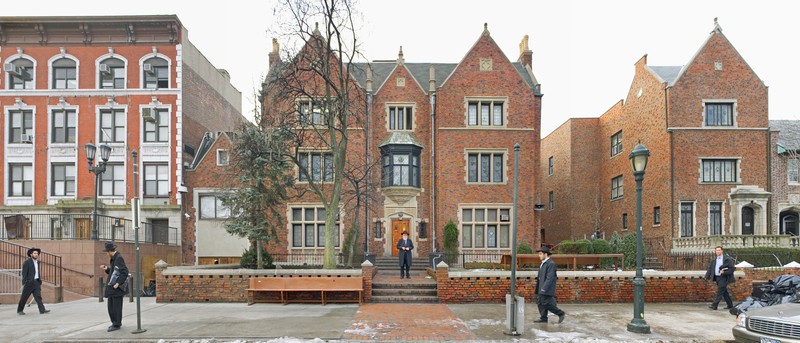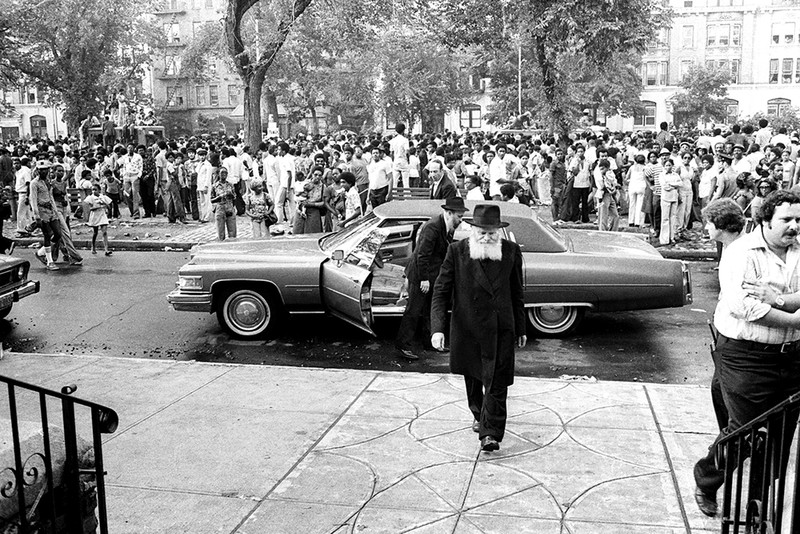770 Eastern Parkway (Chabad-Lubavitch World Headquarters)
Introduction
Text-to-speech Audio
Images
View of the 770 Eastern Parkway building (www.robbinsbecher.com)

The Rebbe arrives at 770 Eastern Parkway in 1977 (www.chabad.org)

Backstory and Context
Text-to-speech Audio
The Chabad-Lubavitch movement was started in 1775 by Rabbi Shneur Zalman in the village of Lyady. The village was once part of the Russian Empire, but today, it sits on the border of Belarus. This subdivision of Hasidic Judaism spread rapidly throughout the Tsar’s Empire and neighboring lands. However, followers were persecuted harshly by the Bolsheviks after the Russian Revolution and were fearful of the growth of the Nazis in Germany. Therefore, the movement – then led by their sixth Rebbe, Yosef Yitzchak Schneersohn – moved to Poland, then to Latvia, and to New York in 1940. They chose a former doctor’s clinic in Brooklyn as their headquarters. This is the same building they use today.
At first, the synagogue was small and isolated. The congregation that met in the basement of the building at 770 consisted of very few members, due largely to the actions of the Nazis in Europe. In 1950, the sixth Rebbe was replaced by his son-in-law, Menachem Mendel Schneerson. The seventh Rebbe encouraged outreach, unlike many other Hasidic movements, and he initiated the construction of Chabad centers – gathering places for Jewish communities - across the globe. Young families known as Shluchim managed these centers, encouraging dispersed or secular Jews to become involved in the Chabad-Lubavitch movement. These centers are often exact replicas of, or closely resemble, the building at 770 Eastern Parkway; similar buildings are found in Israel, Canada, Italy, Ukraine, Brazil, Argentina, Chile, and Australia.
Cite This Entry
Skinner, Tomas and Gavin Thagard. "770 Eastern Parkway (Chabad-Lubavitch World Headquarters)." Clio: Your Guide to History. June 3, 2017. Accessed August 16, 2025. https://theclio.com/entry/22058
Sources
Sanders, Gabriel. "The Portable Legacy." The Forward. 12/29/06. Accessed Web, 6/3/17. http://forward.com/culture/9723/the-portable-legacy/.
Mahler, Jonathan. "Waiting for the Messiah of Eastern Parkway." New York Times. 9/21/03. Accessed Web, 6/3/17. http://www.nytimes.com/2003/09/21/magazine/waiting-for-the-messiah-of-eastern-parkway.html?src=pm&pagewanted=1.

